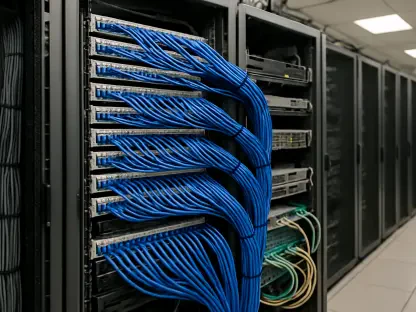In today’s rapidly evolving technological landscape, the transition to fiber-to-the-home (FTTH) networks represents a pivotal shift for the telecommunications industry. This transition is not just about keeping pace with technological advancements but also reflects a concerted effort toward environmental sustainability and economic viability. As industries across the board aim to reduce carbon footprints and enhance operational efficiency, the FTTH infrastructure emerges as both a solution and a strategy, offering opportunities to optimize resource utilization while lowering emissions and operational costs. By understanding the underlying benefits of FTTH, telecom operators can align their growth trajectories with both ecological and financial priorities.
The Advantages of FTTH Over Legacy Technologies
Reducing Carbon Footprint and Operational Costs
Comparative analyses of FTTH networks and older technologies like HFC (Hybrid Fiber-Coaxial) reveal marked improvements in power efficiency and emissions reduction. FTTH networks operate with emissions as much as 96% lower than those of HFC networks. This reduction is not merely an environmental boon but translates significantly to the bottom line, as energy costs constitute a sizable portion of telecom operations. Advances in FTTH, particularly with XGS-PON OLT technology, show drastic reductions in CO₂e emissions per house on an annual basis. These benefits manifest in lower operational costs through decreased energy consumption and minimal maintenance needs. The sustained energy savings provide telecom operators with the dual advantage of promoting sustainable practices while remaining economically competitive.
Leveraging Advanced Digital Tools for Efficiency
An important facet of FTTH deployment is the strategic use of digital tools, which streamline and optimize operational processes. GIS-based planning tools stand out as essential in finely tuning the deployment and maintenance of FTTH networks. By efficiently utilizing these tools, telecom operators can minimize the ecological impact of their networks. Such tools enable precise resource allocation and reduce superfluous construction, further decreasing environmental disruption. Implementing a digital-first strategy helps alleviate bottlenecks and improve collaboration between field teams and office headquarters, ensuring smooth project execution. By focusing on efficient network infrastructure, operators can achieve cost-effective growth while upholding high environmental standards, especially in complex rural settings.
Precision Planning and Management
Proactive Network Management and Predictive Maintenance
Moving away from a reactive operational model, telecom companies are adopting proactive network management to harness the full potential of FTTH infrastructures. This shift involves deploying smart operations software capable of predictive maintenance to preemptively identify and resolve issues before they escalate. By leveraging remote diagnostics, operators can reduce unnecessary site visits, consequently saving on fuel consumption and cutting emissions. Through precision tools and data-driven methods, the telecom industry can target maintenance more effectively, thereby ensuring longer service life for assets. These practices contribute to a holistic operational strategy that optimizes both the environmental impact and cost efficiency of network operations.
Competitive Advantages Through Digital Process Integration
The implementation of comprehensive planning solutions, extending from initial design stages to operational maintenance and fault detection, gives telecom operators a significant competitive edge. These processes not only enhance immediate operational effectiveness but also ensure long-term strategic advantages. The integration of digital and automated systems enables firms to consistently meet sustainability commitments without undermining their market competitiveness. In a world increasingly driven by environmental consciousness, telecom operators that embrace these smart FTTH strategies will not only meet but often exceed such expectations, reinforcing their positions as leaders in a rapidly changing industry landscape.
The Future of FTTH in Telecom Growth
Aligning Sustainability with Profitability
The symbiotic relationship between sustainability and profitability in the telecom sector is further solidified through the incorporation of FTTH networks. Precision planning strategies facilitate network expansion while observing stringent environmental standards. This paradigm enables telecom companies to not only realize immediate operational benefits but also to secure a sustainable future. As ecological awareness gains momentum globally, those operators capable of achieving harmony between environmental targets and financial objectives will remain at the forefront of the industry. FTTH infrastructure, through intelligent design and meticulous management, proves that sustainable growth is not only achievable but desirable.
Embracing Innovation for a Sustainable Future
In today’s rapidly changing world of technology, the shift to fiber-to-the-home (FTTH) networks marks a critical transformation for the telecommunications sector. This transition is not solely about staying updated with technological progress but also about pursuing better environmental practices and sustainable economic growth. Across various fields, there is a pressing push to cut down carbon emissions and improve efficiency. FTTH infrastructure presents itself as both a remedy and a roadmap to achieving these goals. It allows for better use of resources and cuts down on emissions as well as operational costs. By tapping into the comprehensive advantages of FTTH, telecom companies can align their expansion strategies with environmental and financial objectives. This alignment is important as it offers telecom operators the chance to maintain competitiveness while adopting practices that are both eco-friendly and economically sound, paving the way for a more sustainable future in the digital age.









